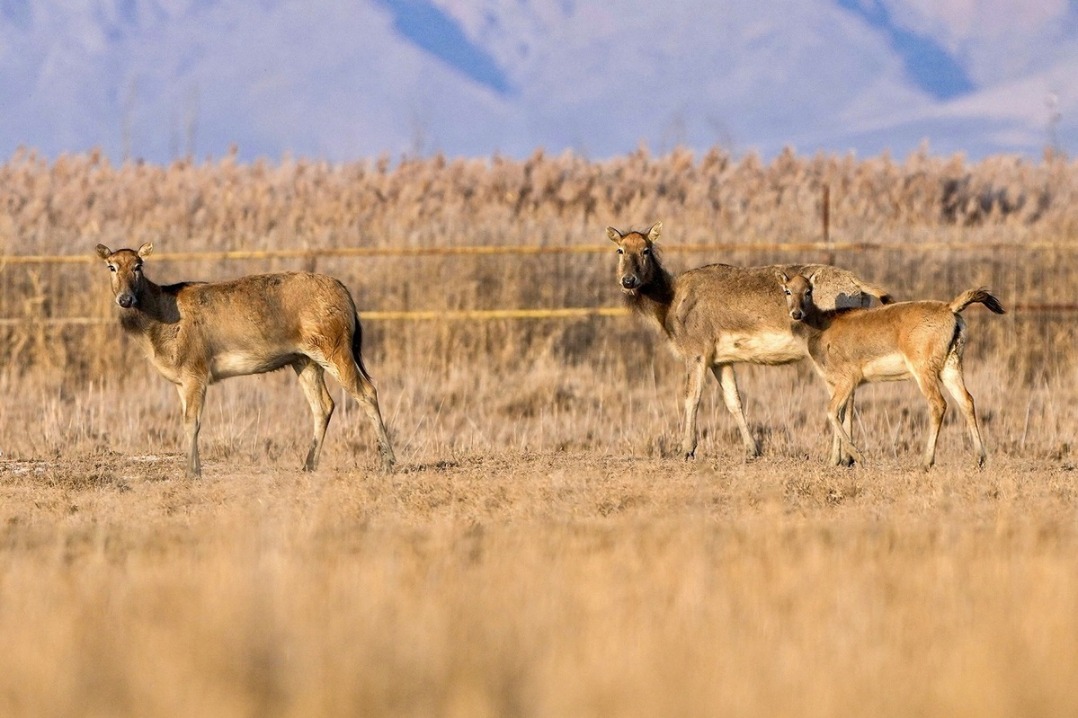Qilihai Wetland in North China reports record bird counts, earlier migration

TIANJIN -- A key wetland in northern China has reported a record number of bird species this autumn, with the annual migration starting earlier than usual, according to conservation officials.
Qilihai Wetland in Ninghe district, Tianjin municipality -- the largest natural wetland in the Beijing-Tianjin region -- has become a critical stopover for hundreds of thousands of migratory birds.
Monitoring data shows that the number of bird species identified there has risen to 308, a significant increase from the 258 recorded in 2021 and a new historic high.
Conservationists attributed this earlier migration to an early cold snap in regions further north.
With temperatures dropping earlier in these areas, some habitats have frozen over, reducing food sources, said Han Kewu, a staff member of the Qilihai Wetland nature reserve management committee. He noted that this early temperature drop had prompted an earlier arrival of migratory species.
Among the first to arrive were oriental storks, a bird under China's top-level national protection. They were recorded in the wetland in early October -- nearly ten days earlier than in 2024.
The wetland is currently experiencing the peak of its migration season, with vast flocks of species such as the Eurasian spoonbill, the pied avocet and the black-tailed godwit gathering in its marshes.
Notably, the population of Eurasian spoonbills has surged to over 3,000 this year -- double the typical numbers seen in previous seasons and setting a new record. Significant numbers of other rare species, including the white-naped crane and the common crane, have also been observed this autumn.
Qilihai Wetland forms a vital link on the East Asian-Australasian Flyway, one of the world's most critical migration routes. It is estimated that more than 600,000 birds will transit through the reserve this season.
To safeguard these migratory visitors, the reserve management has intensified ecological restoration efforts, leading to continuous environmental improvements and a steady increase in biodiversity.
"We will continue to provide meticulous support for the migrating birds through measures such as water level regulation and increased patrol frequency," said Tian Xiujing, director of the reserve's management committee.
Tian noted that they have established an integrated monitoring network, employing drones and a smart monitoring system to achieve comprehensive, intelligent surveillance and management across the reserve.
- Qilihai Wetland in North China reports record bird counts, earlier migration
- Milu deer at Qingtongxia Reservoir Wetland Nature Reserve in Ningxia
- Implementation of 15th Five-Year Plan to offer more opportunities for Taiwan people, businesses: spokesperson
- Xi Story: CIIE, an embodiment of Xi's vision of opening-up
- Technological self-reliance gains support
- Chinese vice-premier urges efforts to advance agriculture, rural development, health care






































